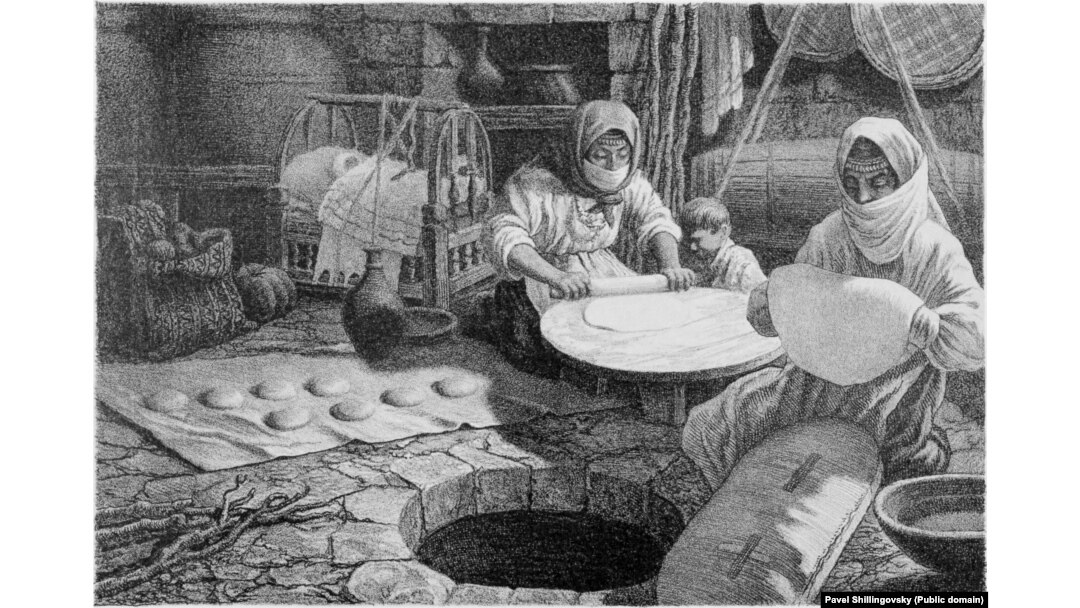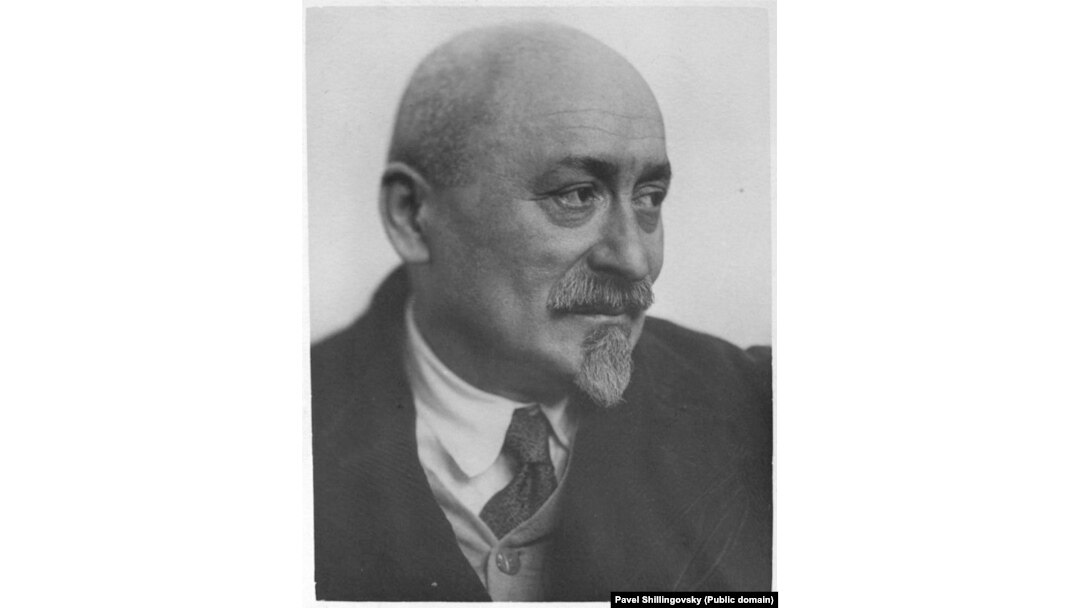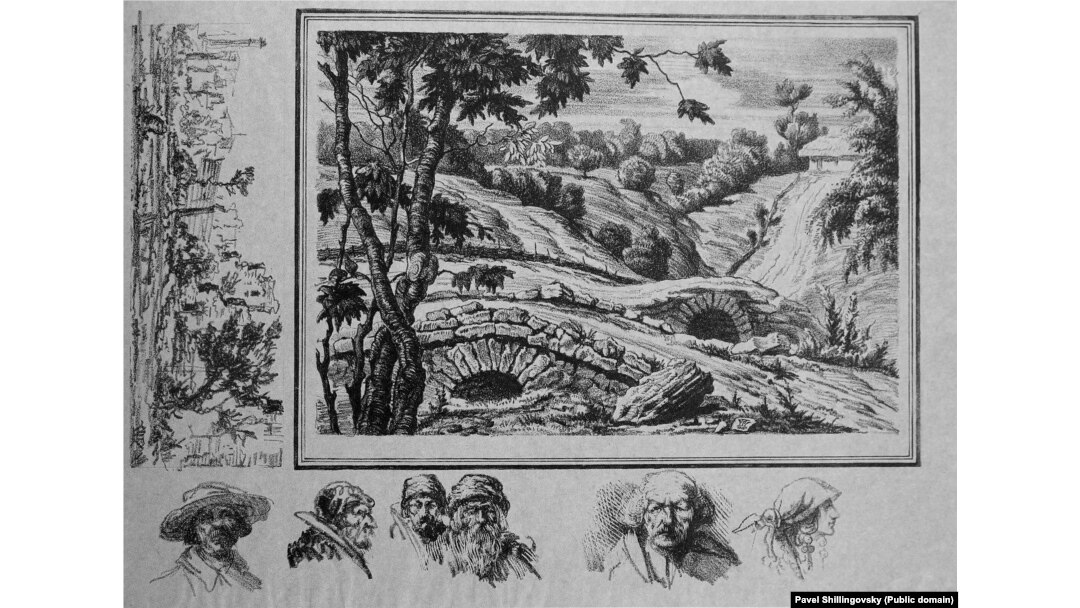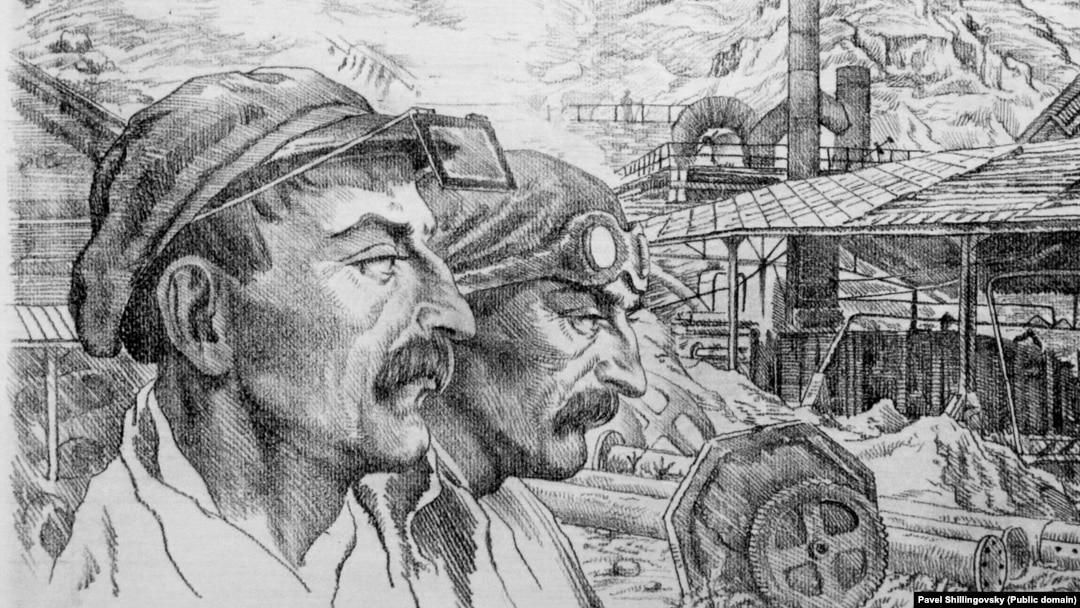Drawings by Chisinau-born artist Pavel Shillingovsky show Armenia being reshaped at the beginning of the communist period.

This image, of Armenian women rolling out dough to slap onto the walls of a "tonir" oven, is one of dozens of sketches made by artist Pavel Shillingovsky in Soviet Armenia around 100 years ago.

Pavel Shillingovsky
Shillingovsky was born in Chisinau, then a part of the Russian Empire, in 1881.

Bessarabian landscape, and portraits of peasants, sketched in 1924.
The young artist studied in Odesa, then in St. Petersburg, where he spent most of his life, but was initially most inspired by the landscape of his native Bessarabia -- territory largely within the borders of today’s Moldova.
A sketch titled Yerevan, Dead-End, made in 1925.
In the early 1920s, the artist traveled through the south of the Russian Empire, including the Crimean Peninsula and the Caucasus. During the trip, he became infatuated with Armenia, a place he would return to repeatedly through the remaining years of his life.
A locksmith’s workshop in Yerevan in 1927.
Art historian Ekaterina Grisina wrote that “the unique atmosphere of Armenia was close to [Shillingovsky’s] soul. It reminded him of his native Bessarabia.”
The construction of a hydropower station in Yerevan in 1925.
As the hand of the Soviet state began to transform Armenian society in the 1920s through massive industrial projects and the suppression of religion, Shillingovsky was able to document the changes through his repeated visits.
A woodcut of buffalo in Yerevan in 1926.
In the early 1900s, Yerevan was described by historian Thomas de Waal as a town with “a mixed Armenian [Christian] and Muslim population, a Russian governor, and a thoroughly Middle Eastern atmosphere.”
A sketch titled Types Of Armenians, made in 1933.
From 1915 onwards, Armenia had became a place of refuge for hundreds of thousands of ethnic Armenians who fled massacres by Ottoman Turks that the United States and many other countries now refer to as genocide.
Fragments of the Zvartnots Cathedral, near Yerevan.
Like other artists in the fledgling Soviet Union, Shillingovsky soon faced pressure to conform to socialist-realist themes and styles.
Workers rebuild Leninakan (known today as Gyumri) in 1927 after a major earthquake in 1926. Six decades later, the northern Armenian town would be devastated once more by an earthquake that killed some 38,000 people in 1988.
A donkey endures a rainstorm near the Etchmiadzin Cathedral.
In September 1930, Shillingovsky was arrested and held under suspicion of links to Romanian nationalists.
The Haghartsin Monastery in Armenia's Tavush Province.
The artist was investigated by the Soviet authorities near the height of Stalin’s repressions.
An illustration of Vladimir Lenin made by Shillingovsky.
Some historians have speculated that drawings of Vladimir Lenin that Shillingovsky made for Soviet propaganda may have saved his life.
The Dzoragyugh district of Yerevan.
Shillingovsky was released from prison in Soviet Russia in December 1930 and soon returned to the Caucasus.
Workers at the copper smelter in Alaverdi in an undated sketch.
Construction of an unnamed project, probably in Armenia or Georgia, in 1933.
A religious site, believed to be the Kecharis Monastery in Armenia's Kotayk Province, sketched in 1933.
Farmers, probably in Armenia's Vayots Dzor Province, in 1933.
After the Nazi invasion of the Soviet Union in 1941, Shillingovsky was caught in the siege of his beloved adopted city of St. Petersburg (then called Leningrad). He died from starvation in April 1942 and was buried in a mass grave with other art professors.
A mass grave of art professors from St. Petersburg's Academy of Arts in the Smolensk Cemetery, where Shillingovsky was buried.
One of only a handful of witnesses to Shillingovsky's burial noted that amid the mass suffering of the Nazi blockade, the women who dug the grave "were hurrying to finish soon, hungry and indifferent."
Today, Shillingovsky's work is held in museums in Russia, Armenia, and Moldova.


